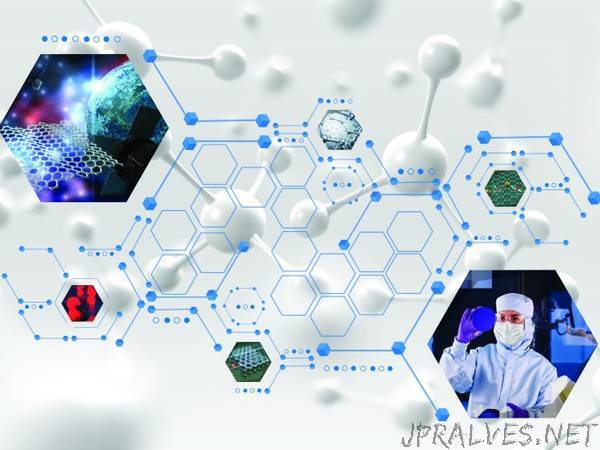
“Graphene is a two-dimensional atomic crystal made up of carbon atoms arranged in a hexagonal lattice. At one atom thick, graphene is the thinnest known compound, as well as the strongest compound discovered (between 100 and 300 times stronger than steel), the lightest known material (with one square metre weighing approximately 0.77 milligrams), and extremely flexible.
Furthermore, graphene is impermeable to molecules and is highly electrically and thermally conductive – enabling electrons to flow much faster than silicon. It is also a transparent conductor, combining electrical and optical functionalities in an exceptional way. Graphene has a wide variety of potential applications, ranging from electronics to composite materials and is relatively cheap to produce in comparison with other materials.
A material for the future
This CORDIS Results Pack showcases 12 articles on 6 ambitious cutting-edge EU research projects funded under the EU’s FP7 and Horizon 2020 research programmes relevant to graphene and 2D materials. Of these, seven articles cover different aspects of the Graphene Flagship.
The Graphene Flagship is the EU’s biggest research initiative and has a budget of EUR 1 billion, representing a new form of joint, coordinated research initiative on an unprecedented scale. Through a combined academic-industrial consortium, the research effort covers the entire value chain, from materials production to components and system integration, aiming to exploit the unique properties of graphene.
An introduction to graphene outlines work conducted by the Flagship, including collaboration with the European Space Agency over the use of graphene in space applications, such as light propulsion and thermal management. Researchers also used optoelectronic communication systems to provide fast data for the future. The large-scale production of graphene for commercial market applications involved scaling up manufacturing to industrial scale, whilst maintaining consistency, high quality and cost efficiency.
Scientists investigated chemical processing and functional applications of graphene and graphene-related materials for engineering new molecular structures with unique properties. Graphene spintronics utilised both electron charge and spin at room temperature to create new possibilities for information processing and storage. Finally, the Flagship has investigated the use of graphene for biomedical applications to develop innovative medical devices and sensors for detecting, treating and managing nervous system diseases.
European graphene research doesn’t all fall under the remit of the Flagship and researchers are using other EU funding mechanisms to undertake other projects. GRAPHEALTH produced the next generation of wearable sensors, while GRASP applied interactions between graphene and light to quantum computing and biomedicine. GraTA developed tunneling accelerometers for use in machine vibration monitoring. HIGRAPHEN created dense polymer composites for use in optoelectronics and energy storage. PolyGraph (working closely with the Graphene Flagship) studied graphene-reinforced polymers for use in the aeronautics and automobiles sectors.”
